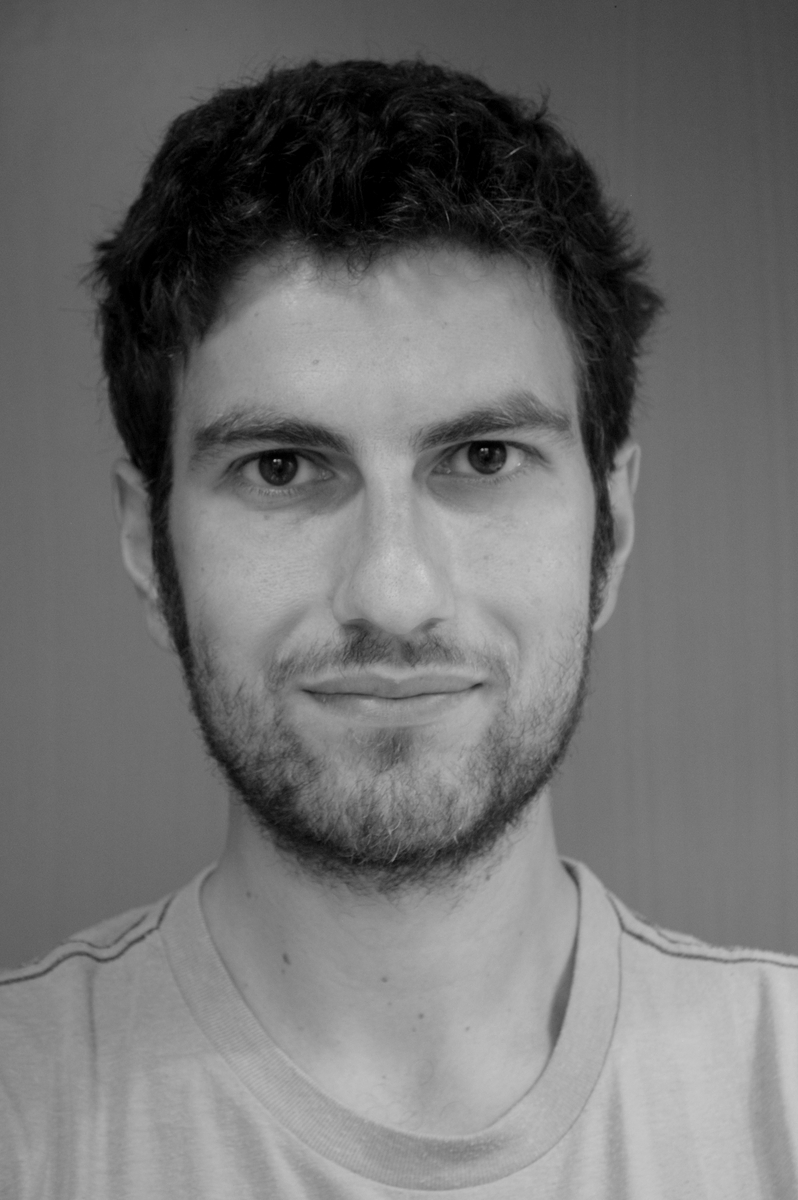Dr. Damiano Genovese
Post-Doc
Office: KIT Telp: +49 (0) 721 60 82 6883 FAX: - Email: damiano.genovese@partner.kit.eduDamiano Genovese was born in Messina in 1983, and he obtained his PhD in Chemistry at University of Bologna in 2011 under the supervision of prof Luca Prodi. As a student, he received two grants to fund his research stays in Ecole Normale Superieure (France) and Harvard University (USA). He was awarded the ENI prize 2013 for his Debut in Research. He is now a Humboldt Fellow at Karlsruhe Institute of Technology in the research group of prof. De Cola. His research has been focused on colloidal systems, on self-assembling architectures, and on nanostructured functional materials for optoeletronics, sensing, and biomedicine. He works now on mesoporous silica to be applied as functional and responsive materials.
Work and education
2014 Alexander von Humboldt Fellow at Karlsruhe Institute of Technology – ISIS Strasbourg
Mesoporous films as responsive membranes - Supervisor Prof. Luisa De Cola
2013 Post-Doc at Università di Bologna
Fluorescent sensors and labels based on nanoparticles - Supervisor Prof. Luca Prodi
July 2012 Visiting fellow at WWU Münster
Research exchange within EU project INOFEO, host Prof. Luisa De Cola
2011 – 2012 Post-Doc at Università di Bologna
Magnetic nanoparticles interfaced with zeolites - Supervisor Prof. Nelsi Zaccheroni
Aug 2009 – Apr 2010 Visiting fellow at Harvard University, Cambridge, MA, USA
Colloidal fluids with microfluidics and microscopy - Supervisor Prof. David Weitz
2008-2010 PhD in Chemistry at Università di Bologna
“Supramolecular Approaches to Organized Luminiscent Nanostructures for Sensing, Labeling and Imaging Applications” - Supervisor Prof. Luca Prodi
2007 Master degree in Photochemistry and Chemistry of Materials, Università di Bologna (first class honors degree 110/110 cum Laude)
2007 Stage in Electrochemistry at Ecole Normale Superieure, Paris, France
“An electrochemical device to release and sense Ca2+ ions” - Supervisor Prof. Christian Amatore, Prof. Francesco Paolucci
2005 Bachelor degree in Chemistry at Università di Bologna
“Functionalization of ITO electrodes” - Supervisor Dott. Massimo Marcaccio
Research
We design, prepare and investigate mesoporous materials to gate or release chemical species upon external triggers.
In particular, mesoporous organic–inorganic hybrid materials are our materials of choice, since combining the hardness of the inorganic components with the softness of the organic counterpart allows the implementation of several functionalities in a single material.
We then study, by means of dynamic techniques, the diffusion of molecular species through these composites in situ and in real time.
Such materials can find application as artificial membranes, or for targeted and time-controlled drug delivery, or as thin layers with switchable optoelectronic properties.
1] Inagaki, S. Guan, T. Ohsuna, O. Terasaki, Nature 416, 304 (2002)
2] Z. Teng, G. Zheng, Y. Dou, W. Li, C.Y. Mou, X. Zhang, A. M. Asiri, D.Zhao, Angew. Chem. Int. Ed., 51, 2173, (2012)
Key Publications
D. Genovese, S. Bonacchi, R. Juris, M. Montalti, L. Prodi, E. Rampazzo, and N. Zaccheroni
“Prevention of Self-Quenching in Fluorescent Silica Nanoparticles by Efficient Energy Transfer”
Angew. Chem. Int. Ed., 2013, 52, 5965 –5968
D. Genovese, M. Montalti, L. Prodi, E. Rampazzo, N. Zaccheroni, O. Tosic, K. Altenhoner, F. May and J. Mattay
“Reversible photoswitching of dye-doped core–shell nanoparticles”
Chemical Communication, 2011, 39, 10975-10977
F. Maffei, P. Betti, D. Genovese, M. Montalti, L. Prodi, R. De Zorzi, S. Geremia and E. Dalcanale
“Highly Selective Chemical Vapor Sensing via Molecular Recognition: Specific C1-C4 Alcohols Detection with a Fluorescent Phosphonate Cavitand”
Angewandte Chemie International Edition, 2011, 50, 4654–4657
D. Genovese and J. Sprakel
“Crystallization and intermittent dynamics in constricted microfluidic flows of dense suspensions”
Soft Matter, 2011, 7, 3889-3896
C. Amatore, D. Genovese, E. Maisonhaute, N. Raouafi, and B. Schollhorn.
“Electrochemically Driven Release of Picomole Amounts of Calcium Ions with Temporal and Spatial Resolution”
Angewandte Chemie International Edition, 2008, 47, 5211 –5214.

